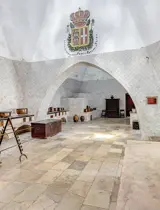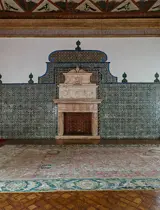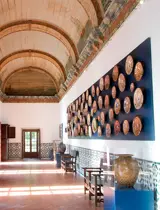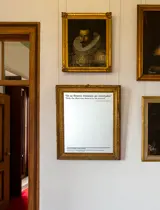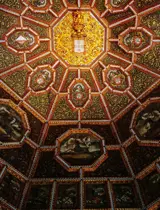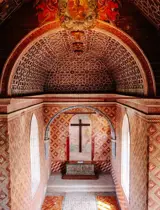
Council Chamber
Council Chamber
Room used for the meetings of the judges of the House of Supplication and, later, the king’s advisers.
Its plain but monumental architecture would have been covered with luxurious fabrics during meetings, to create a sumptuous and solemn ambience.
The current layout of the room is a contemporary and sensory interpretation that includes the elements that would undoubtedly have been present: the textiles, a table, different chairs according to social status, writing materials and a bell to summon the doorkeeper.
Discover the objects on display in this room.

Armchair
- Portugal, 18th century
- Rosewood, leather and metal
- Inv. No. PNS2867

Inkstand
- Portugal, 18th century
- Brass
- Inv. No. PNS5978 and PNS5984

Table
- Portugal, 17th century
- Rosewood and gilded metal
- Inv. No. PNS3114

Chairs (6) and Stool
- Portugal, 17th century
- Wood, leather and brass
- Inv. No.
- Nº Inv. PNS3034, PNS3035, PNS3036, PNS3037, PNS3120, PNS3122 and PNS3387


